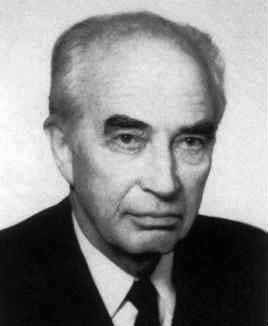


 تاريخ الرياضيات
تاريخ الرياضيات
 الرياضيات في الحضارات المختلفة
الرياضيات في الحضارات المختلفة 
 الرياضيات المتقطعة
الرياضيات المتقطعة
 الجبر
الجبر
 الهندسة
الهندسة 
 المعادلات التفاضلية و التكاملية
المعادلات التفاضلية و التكاملية 
 التحليل
التحليل
 علماء الرياضيات
علماء الرياضيات |
Read More
Date: 21-9-2017
Date: 14-9-2017
Date: 14-9-2017
|
Died: 9 March 1994 in Soisy sur École (near Paris), France

Paul Dubreil attended the Lycée in Le Mans where his father was the professor of mathematics. From there he went to Paris where he studied at the Lycée St Louis, preparing for the entrance examinations to the École Normale Supérieure and the École Polytechnique. He entered the École Normale Supérieure, then went to the Sorbonne to complete his License es Sciences.
In the national examinations of 1926 Dubreil was placed first in the whole of France and was appointed a lecturer at the École Normale Supérieure in 1927. There he worked for his doctorate. In 1929 he won the prestigious Rockefeller scholarship which enabled him to visit Hamburg to study with Artin. He married Marie-Louise Jacotin on 28 June 1930 in Paris. She was also a mathematician who cooperated with him for the rest of their careers. Paul returned to Paris briefly to defend his doctoral thesis in October 1930, and then went back to Hamburg.
Emmy Noether visited Hamburg in 1931 and Dubreil found discussions with her extremely useful. He visited Göttingen to work with van der Waerden, then went to Frankfurt because by that time Noether was in Frankfurt and Dubreil wanted to continue exchanging ideas with her. Certainly Dubreil was going to get the most out of his Rockefeller scholarship and he next went to Rome where he discussed problems with the geometers Castelnuovo, Enriques and Severi. Dubreil's main interest at that time was algebraic varieties and he believed that he had learnt most from Noether so, before returning to France, his final visit was again to Göttingen to visit Noether.
The exciting travels of his fellowship over, Dubreil took up his first permanent post at the University of Lille. Two years later, in 1933, he moved to Nancy where he was to spend the period of World War II. During this period his wife Marie-Louise had appointments at Rennes and then at Poitiers. In 1946 Dubreil returned to the Sorbonne and there, in 1954, he was appointed to the chair of arithmetic and number theory.
Dubreil began to work in more general algebraic structures around 1936 when he became interested in generalising the familiar elementary properties to groups into more general settings. He studied the lattice of equivalence relations on sets and from there was led to study semigroups.
Thue had published on semigroups as early as 1914 when he had posed word problem for semigroups. However it was not until the late 1930s and early 1940s that the study of semigroups became a major topic. Malcev, Clifford and Dubreil became major figures in the new subject, Dubreil's first major work beingContribution à la théorie des demi-groupes.
Lallement who was a student of Dubreil's, describes his lectures in [1]:-
Each of his lectures was a brilliant piece of exposition, clear, precise, polished, and at the same time inspiring by his ability to relate the topics in hand to past and current research. I remember vividly the keen competition this course [Algebra and Number Theory] generated among students who were all eager to solve the most challenging weekly problems. When I became one of his doctoral students in 1961, I realised how deep Paul Dubreil's influence on young algebraists was. He was directing a large number of theses, and the weekly meetings of the Dubreil-Pisot seminar were rallying points of researchers, coming even from distant universities to listen to a very wide variety of guest lectures.
Articles:



|
|
|
|
دراسة تحدد أفضل 4 وجبات صحية.. وأخطرها
|
|
|
|
|
|
|
العتبة العباسية تستعدّ لتكريم عددٍ من الطالبات المرتديات للعباءة الزينبية في جامعات كركوك
|
|
|